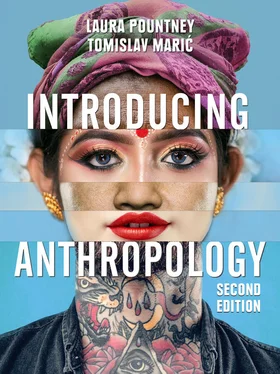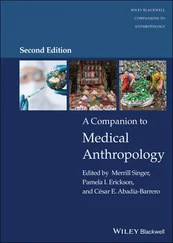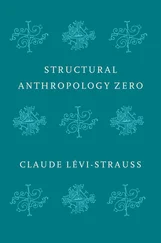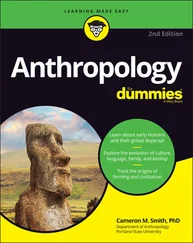Criticism:Social constructionism is one-sided as a purely biological naturalistic approach. The body is not exclusively a social construction.
The body as symbol
This perspective focuses on the representation or symbolic nature of the body as a way of giving it a social meaning. Mary Douglas ([1970] 2003) explored the symbolic significance of the body, arguing that it may be viewed metaphorically as a text that can be read as a symbol or signifier of the world that it inhabits. The general theme in her work is that the social body constrains how the physical body is perceived and experienced. Douglas writes about ‘two bodies’, the physical (natural body) and the social (cultural body). In her book Natural Symbols , the argument is that the human body is the most readily available image of a social system and that ideas about it relate closely to dominant ideas about society. According to Douglas, the more the social group exerts pressure on its individual members, the greater the demand for conformity expressed by the control of the body; bodily control is thus an expression of social control. The body, in other words, is above all a metaphor of society as a whole. An example of this theory may be seen in Terence Turner’s ‘The social skin’ (see pp. 75–7).
Feminism and the body
Feminist anthropologists claim that gendered expectations and ideas about the body exist for both females and males. They point to the ways in which body ideals serve as mechanisms of social power and control. For most feminists, the rise of cosmetic surgery as a possible, and acceptable, means of self-modification represents the ongoing oppression of women by male concepts of beauty. They also claim that cultural institutions dominated by men, such as religion and medicine, also control ideas about women’s bodies (see more on gender and feminism in Chapter 10).
Phenomenological approaches
Although it may serve as a powerful symbolic medium, the body is also capable of participating in the creation of social meaning. Anthropologists have argued that the body is an active agent in the social world. According to Thomas Csordas (1994), the body is not an object to be studied in relation to culture, but is to be considered as the subject of culture, or, in other words, as the existential ground for culture. He seeks to understand human participation in the cultural world through embodied experience.
In his analysis of perception (how we become aware of the sensory world around us), the philosopher Maurice Merleau-Ponty ([1962] 2014) rejects the notion of dualism and uses the concept of embodiment, which is the phenomenological way of knowing and experiencing the world around us through our own body. This perspective looks at how self-image and self-identity are affected by and help to shape notions of the normal body. Their perception of how they look may lead people to pursue real changes through dieting, exercise or even surgery to alter their body shape and change identity. Phenomenologically oriented anthropologists tend to focus on issues of individual identities, while social constructionists and feminists focus more on social meanings.
embodimentA tangible or visible form of an idea, quality or feeling
Symbolic Classification and the Body: The Body and Society
Anthropologists look at the body as both an individual and a social entity that reflects the values and beliefs of the wider society to which it belongs. It is also seen as something that people continually ‘create’ or reproduce. Anthropologists have studied the relationship between the body and society – the body as a product of social and cultural forces. Robert Hertz and Terence Turner, for example, explored the body as a tool for thinking: how the human body is used to classify – that is, to place things into categories to make sense of the world around us. Although everyone has a body, not everyone speaks the same language or shares the same culture or religion. One way of understanding the body is to look at how it is used in symbols, myths, ritual, ethics and the definition of the sacred and the profane.
Robert Hertz (2008[1909]) suggested that most societies encourage right-handedness through the process of socialization. He begins with the question of why the right hand should be associated almost universally with goodness, purity and auspiciousness, and the left hand with evil, pollution and death. Hertz noticed that biological asymmetry was exaggerated by training, and that most societies encourage right-handedness at the expense of the left. Left-handed children may be discouraged from using their left hand or foot. They may be punished or ridiculed and have their left hand bound or otherwise restricted. In many cultures it is common to eat and to greet someone with the right hand. The left hand may be associated with defecation and symbolize uncleanliness. The values and associations attributed to the right hand differ markedly from those of the left. The body gives societies a cue – left-handedness is everywhere less common than the dominance of the right. It is a convenient marker on which cultures have created symbolic associations that are as nearly universal as any symbol can be. When associations of left and right are compared cross-culturally, Hertz noticed that there is a striking uniformity. He also observed that, among the Maori, the right side is regarded as male and the left side as female and profane. For example, he states:
Among the Maori, the right side is the sacred side, the seat of good and creative powers, the left is the profane side, possessing no virtue other than certain disturbing and suspect powers … the right side is the ‘side of life’ (and of strength) while the left is the ‘side of death’ (and of weakness). Fortunate and life giving influences enter us from the right and through our right side. Inversely, death and misery penetrate to the core of our being from the left. ([1909] 2008: 45)
When asking himself why these polarities exist between left and right, Hertz suggests they derive from an attempt to link the human body to the natural world and to religion. The asymmetry between the right and left hand reflects the fundamental polarity of the spiritual world – that between the sacred and the profane – and this in turn reflects man’s dual nature. ‘It is because man is a double being – a natural/profane being and a social/ sacred being’ ([1909] 2008: 112). With Hertz, the body is no longer seen as a mere biological given, but is shown to carry the imprint of culture. What appears to be natural, the opposition between right and left, is in reality a social fact. Fiona Bowie (2006) suggests that it is the human ability to use the body as a symbol, to think with and to impose meaning on the world that makes handednessso relevant. Therefore, cultural rules can be made to appear natural. The symbolic weight given to right–left polarity is decreasing in Western societies, but this does not mean that categories associated with left- and right-handedness necessarily disappear. They may become attached to new meanings. This may reflect secularization or a reduction in gender role differentiation.
handednessA preference for using one hand as opposed to the other
What does handedness tell us about the power of culture as a means to control our bodies?
Summarize the ways in which the ‘left’ and the ‘right’ have been characterized in different societies.
Think about your own experiences of handedness. Were you encouraged to be righthanded?
Think about others that you know. Are left-handers advantaged by being left-handed – say, in sport?
Читать дальше












